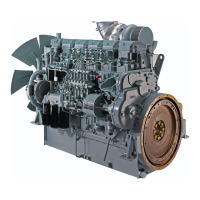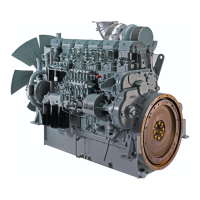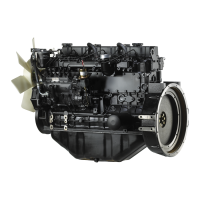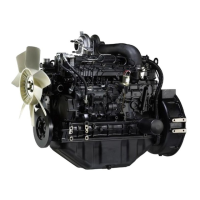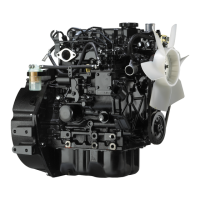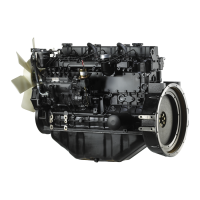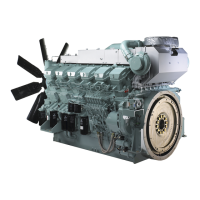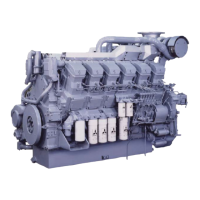9-14
Chapter 9 LUBRICATION SYSTEM
2.7.1 Oil Cooler - Inspect
Check the oil passages of element for flaws or cracks by
applying compressed air of 1.5 MPa {15 kgf/cm
2
} [217 psi].
If any leakage or damage is found, replace the element with
a new one.
Oil Cooler - Inspect
2.8 Oil Thermostat - Inspect
2.8.1 Oil Thermostat Seal - Inspect
(1) Inspect the oil thermostat seal for deterioration and
cracks. If defects are found, replace the seal with a new
one.
(2) Refer to the illustration for correct orientation of seal
installation.
Oil Thermostat Seal - Install
2.8.2 Oil Thermostat Operation - Inspect
(1) Put the oil thermostat fully into water in a container.
(2) Heat the water while measuring water temperature.
Record the temperature at which valve start to open,
and at which valve lift becomes to the standard value.
Replace the thermostat if a deviation from the standard
temperature is unusual.
Note:(a) Stir the water to maintain uniform temperature dur-
ing the test.
(b) At assembling, be sure to check the valve opening
temperature marked on the side of thermostat valve.
Oil Thermostat Operation - Inspect
2.9 Oil Cooler and Oil Thermostat - Assemble
To assemble, follow the disassembly sequence in reverse.
Thoroughly clean oil passages with wash oil, and dry the
cleaned parts with compressed air.
Air
Leak, flaw, crack
Mounting direction
Thermostat
Thermostat seal
Be very careful with hot water and flames.
Or, you may get burned or cause a fire.
Item Standard value
Valve opening temperature
80 to 84°C
[176 to 183.2°F]
Temperature at which valve lift becomes
11 mm [0.43 in.] or more
95°C
[203°F]
Water (stir with a stick)

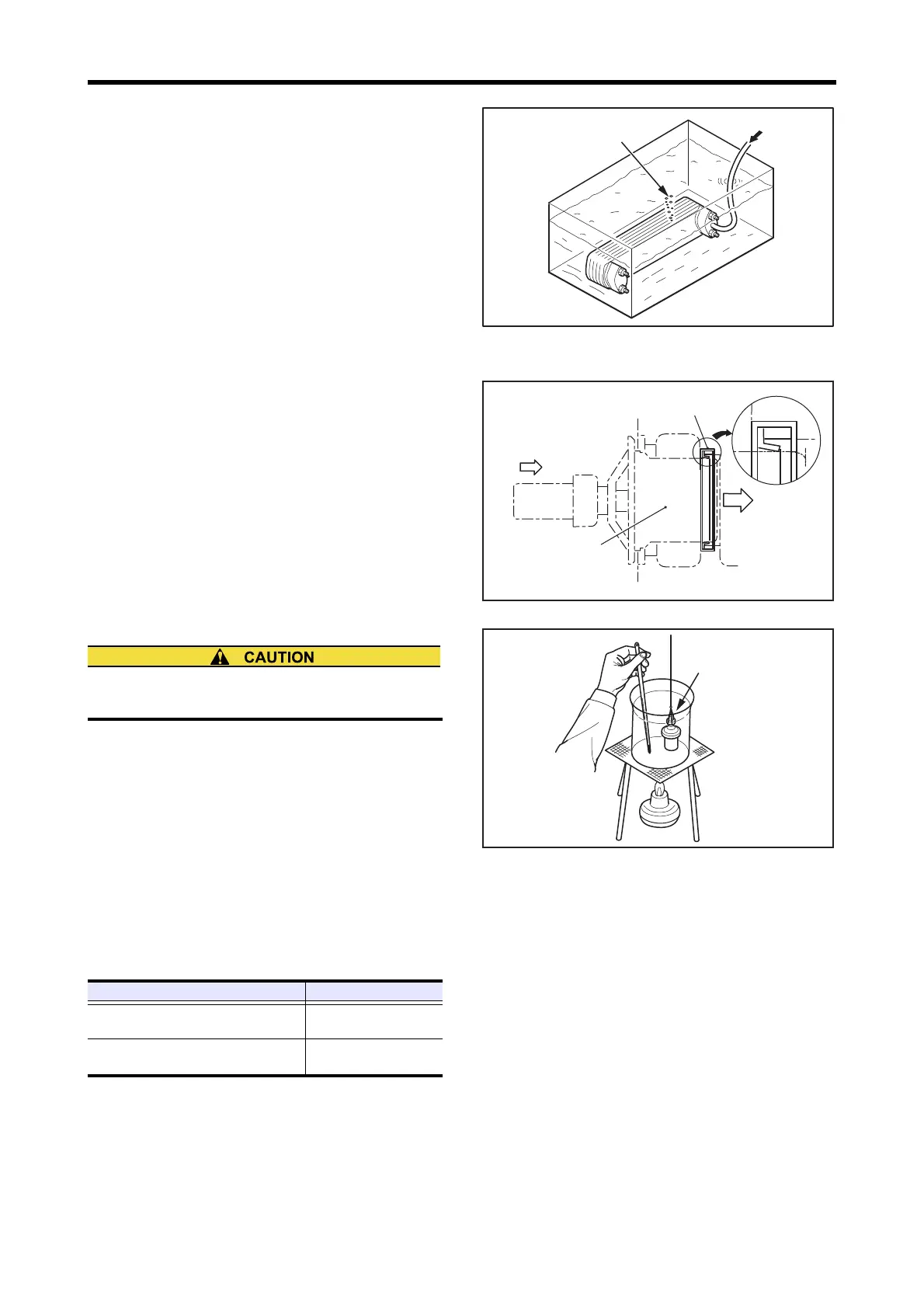